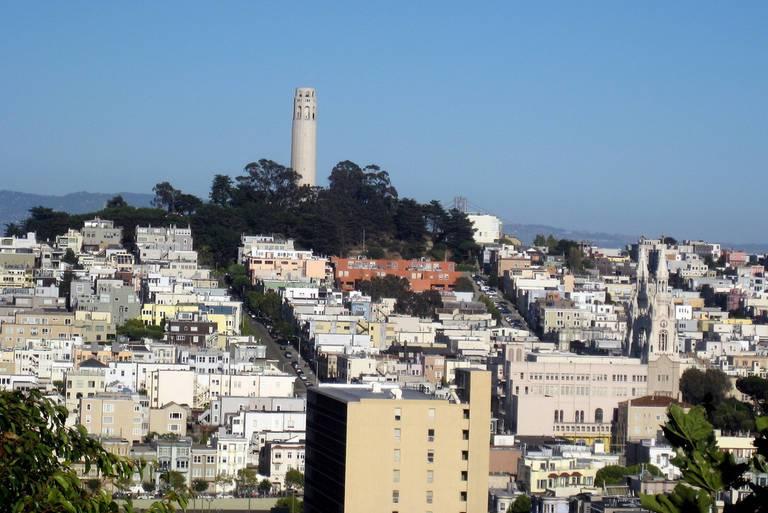
California has long been notorious for NIMBYism (not in my backyard), and the symptoms range from pushback against high density housing in Silicon Valley’s Cupertino to communities in Orange County and elsewhere apopleptic at the thought of sober living homes in their neighborhoods. NIMBYism is hardly unique to the Golden State, however. Citizens across the country understand the need for new infrastructure in any form – as long as such projects are not anywhere near them. Witness the late Senator Ted Kennedy’s steadfast opposition to offshore wind power farms in his native Massachusetts, for example.
Many younger Americans, who feel as if they have been through the triple-whammy of the lingering effects of last decade’s financial crisis, a tight job market (for good-paying jobs) and expensive housing, have had enough. Often hailed and lampooned as “angry millennials with a radical housing solution,” by publications such as the Guardian, they are seen as either forward-thinking affordable housing activists – or patsies for high-end apartment developers seeking a backdoor to seeing their projects come to fruition. Regardless of how they are perceived, no one can deny that this movement is spreading: from just a “ragtag” bunch of fringe groups a year ago, said the New York Times, they have coalesced to become a more sophisticated and disciplined movement today.
The stubborn fact motivating these activists is that housing starts in the U.S. have long been at a standstill – witness the problems in Seattle, as the “Amazon effect” and the paucity of land have caused rents in the city of 700,000 to skyrocket. Downtown Detroit, now home to Quicken Loans and other companies under Dan Gilbert’s umbrella, has approached an average of $2 a square foot downtown. That may still be lower than many American cities, but is still double the price compared to five years ago.
Renters in many cities, such as in San Francisco, where the average rent is approaching $5 per square foot, have had enough. And therein arises the YIMBY (yes in my backyard!) movement.
As best defined by Nathaneal Johnson, YIMBYs are millennials who are “angered by the urban housing shortage, have begun demanding a building boom to put roofs over heads, get people out of cars, drive down rents, and stop sprawl.”
Thus San Francisco is home to one of the most active YIMBY communities in the U.S., and this movement’s supporters have organized as a local political force to push pro-housing policies “advocating for infill development in every neighborhood in San Francisco.” These Bay Area YIMBYs were partly behind the drive to have a law passed in California in September that aims to streamline the approval process for affordable housing across the state.
And they hope to spread the word and share ideas, largely through an annual YIMBYtown conference, which organizers say offers a forum for gathering affordable housing activists, developers and policymakers to find practical solutions to the country’s ongoing housing crisis.
Whether the results are apartments atop grocery stores or in brownfield sites, many YIMBYs also point out the environmental case for high density housing. California’s aggressive climate change goals, as argued by the Los Angeles Times, will not be possible without denser cities that can cut commute times, end sprawl and allow people to walk to places such as supermarkets. Los Angeles, for example, already has a population density of about 7,500 people per square mile – and more than four to five times that in Koreatown and surrounding neighborhoods. That makes LA even denser than “smart cities” such as Portland, but if YIMBYs have their way, California’s cities are about to become even more densely populated.
The problem YIMBYs face is the knee-jerk opposition by many neighborhood associations that assume more housing built means more rich people move in, even though the evidence suggests that is often not the case. But an in interview with Quartz this summer, Sonja Trauss notes that many citizens all too frequently put the kibosh on housing projects over concerns such as blocked views, parking concerns or a new building’s aesthetics:
“Of course, neighbors should have input. But what neighbors have done with their input is not make better projects, but to shut down projects altogether. I’ve had lots of conversations where I ask these people about where they think the people who would have lived in the building are going to go. They mostly say, ‘Who cares? What does that matter for anything?’ For YIMBYs, it’s the number-one thing.”
The solution, therefore, to many YIMBYs is simple economics: adding to the supply of housing in cities can help relieve those inflationary pressures, temper demand and in the meantime, at least create equitable opportunities for citizens to find an affordable place to live so they finally have that coveted roof over their heads.
Image credit: Wally Gobetz/Flickr

Leon Kaye has written for 3p since 2010 and become executive editor in 2018. His previous work includes writing for the Guardian as well as other online and print publications. In addition, he's worked in sales executive roles within technology and financial research companies, as well as for a public relations firm, for which he consulted with one of the globe’s leading sustainability initiatives. Currently living in Central California, he’s traveled to 70-plus countries and has lived and worked in South Korea, the United Arab Emirates and Uruguay.
Leon’s an alum of Fresno State, the University of Maryland, Baltimore County and the University of Southern California's Marshall Business School. He enjoys traveling abroad as well as exploring California’s Central Coast and the Sierra Nevadas.














